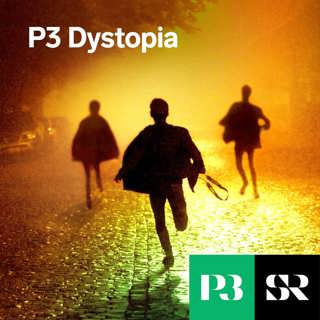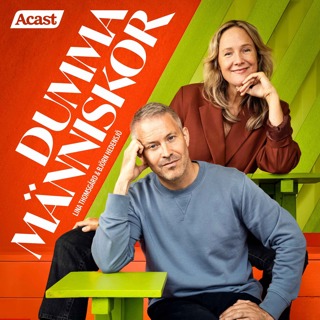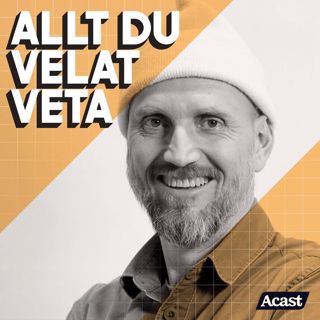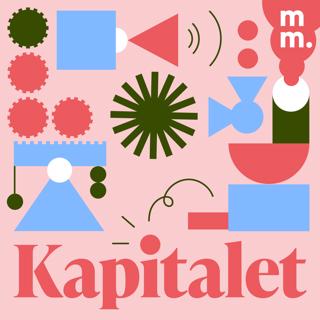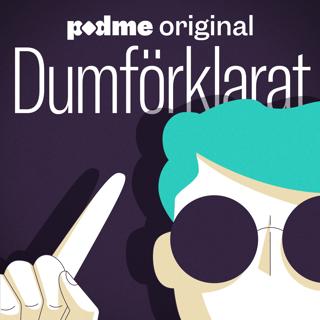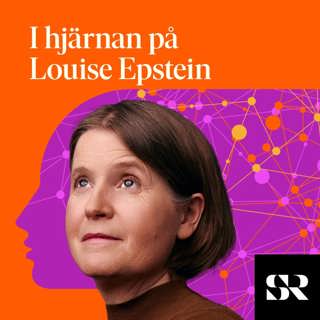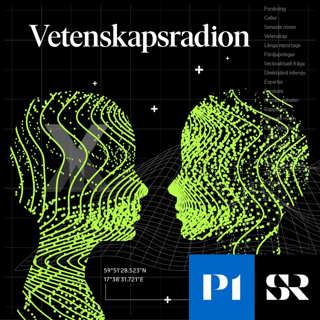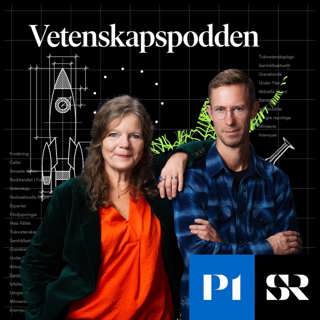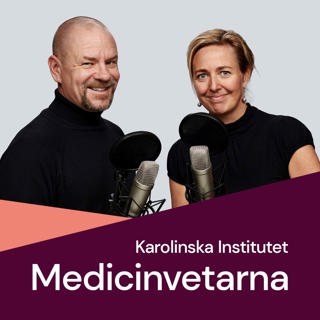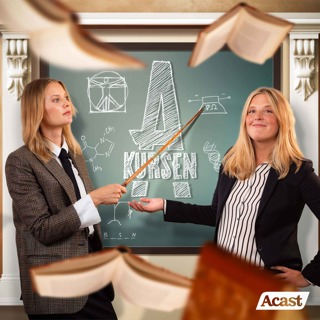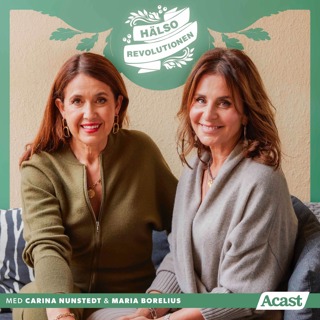
ENCORE: Hermann Göring's Luftwaffe and the $6 billion deal
This episode was originally aired on March 16, 2021. Norway doesn't seem like a natural place for the aluminium industry to blossom. But somehow, it did – due in part to the unlikely combination of WWII Germany, a modest English engineer who created a worker’s paradise, an ambitious industrialist prosecuted as a traitor and a hardworking PhD. All of these factors and personalities helped build modern Norway, one aluminium ingot at a time.Today's guests are Hans Otto Frøland, Svein Richard Brandtzæg and Randi Holmestad. Frøland is one of the researchers working in the Fate of Nations project, which is based at NTNU and focused on the global history and political economy of natural resources. To see archival photographs related to the episode, check out this companion article in Norwegian SciTech News.You can read more about the history of aluminium in Norway here:From Warfare to Welfare: Business-Government Relations in the Aluminium Industry (2012) Frøland, Hans Otto; Ingulstad, MatsAkademika ForlagFrøland, Hans Otto; Kobberrød, Jan Thomas. (2009) The Norwegian Contribution to Göring's Megalomania. Norway's Aluminium Industry during World War II. Cahiers d'histoire de l'aluminium. vol. 42-43.Frøland, Hans Otto. (2007) The Norwegian Aluminium Expansion Program in the Context of European integration, 1955-1975. Cahiers d'histoire de l'aluminium.Gendron, Robin S.; Ingulstad, Mats; Storli, Espen. (2013) Aluminum Ore: The Political Economy of the Global Bauxite Industry. University of British Columbia Press. 2013. ISBN 978-0-7748-2533-7.Like the show? Have questions? Contact me, Nancy Bazilchuk, at nancy.bazilchuk@ntnu.noYou can find the transcript for the show here. Hosted on Acast. See acast.com/privacy for more information.
25 Juli 202429min

ENCORE: Old bones and modern germs
This episode originally aired on Feb. 16, 2022.Trondheim, Norway’s first religious and national capital, has a rich history that has been revealed over decades of archaeological excavations. One question archaeologists are working on right now has a lot of relevance in a pandemic: Can insight into the health conditions of the past shed light on pandemics in our own time? Now, with the help of old bones and dental plaque, researchers are learning about how diseases evolved in medieval populations, and what society did to stem them — and how that might help us in the future.Our guests for this episode were Axel Christophersen, a professor of historical archaeology at the NTNU University Museum; Tom Gilbert, a professor at the NTNU University Museum and head of the Center for Evolutionarly Hologenomics based at the University of Copenhagen; and Elisabeth Forrestad Swensen, a PhD candidate at the NTNU University Museum.You can read more about the MedHeal research project on the project’s home page.Here are some of the academic articles on medieval Trondheim related to the podcast: Zhou Z, Lundstrøm I, Tran-Dien A, Duchêne S, Alikhan NF, Sergeant MJ, Langridge G, Fotakis AK, Nair S, Stenøien HK, Hamre SS, Casjens S, Christophersen A, Quince C, Thomson NR, Weill FX, Ho SYW, Gilbert MTP, Achtman M. Pan-genome Analysis of Ancient and Modern Salmonella enterica Demonstrates Genomic Stability of the Invasive Para C Lineage for Millennia. Curr Biol. 2018 Aug 6;28(15):2420-2428.Stian Suppersberger Hamre, Valérie Daux- Stable oxygen isotope evidence for mobility in medieval and post-medieval Trondheim, Norway,Journal of Archaeological Science: Reports, Vol. 8, 2016, pp 416-425, A transcript of the show is available here. Hosted on Acast. See acast.com/privacy for more information.
26 Juni 202426min

ENCORE: Shedding light on the polar night
This episode originally aired on January 27, 2021.Krill eyeballs. The werewolf effect. Diel vertical migration. Arctic marine biologists really talk about these things. There’s a reason for that — when it comes to the polar night, when humans see only velvety darkness, krill eyeballs see things a little differently. And when the sun has been gone for months, during the darkest periods of the polar night, the moon does unexpected things to marine organisms. Learn more about what biologists are figuring out about the workings of the polar night — and what it means at a time when the Arctic is warming at a breakneck pace. Our guests for this episode were Jørgen Berge, Geir Johnsen, Laura Hobbs and Jonathan H. Cohen. You can see a transcript of the episode here. Fridtjof Nansen’s book about his Arctic expedition is called Farthest North. You can also read about the other influences his pioneering journey had on science here. You can also read about Geir Johnsen’s different research projects in a series of articles from Norwegian SciTech News. The findings of the polar night team are so surprising that they actually wrote a textbook about it, edited by Jørgen Berge, Geir Johnsen and Jonathan H. Cohen. The book is titled Polar Night Marine Ecology: Life and Light in the Dead of Night.Here are some of the polar night research articles:Berge, J., Renaud, P. E., Darnis, G. et al. (2015) In the dark: A review of ecosystem processes during the Arctic polar night. Progress in Oceanography, 139: 258-271 Ludvigsen, M., Berge, J., Geoffroy, M. et al. (2018) Use of an Autonomous Surface Vehicle reveals small-scale diel vertical migrations of zooplankton and susceptibility to light pollution under low solar irradiance. Science Advances 4: eaap9887 Hobbs L, Cottier FR, Last KS, Berge J (2018) Pan-Arctic diel vertical migration during the polar night. Mar Ecol Prog Ser 605:61-72. Berge, Jørgen; Geoffroy, Maxime; Daase, Malin; Cottier, et al.(2020) Artificial light during the polar night disrupts Arctic fish and zooplankton behavior down to 200 m depth. Communications Biology. 3 (102), 10.1038/s42003-020-0807-6 Hosted on Acast. See acast.com/privacy for more information.
31 Maj 202424min

Strange bedfellows: Howard Hughes, a $2 billion ship and a lost Soviet submarine
It's 1968 and a Soviet sub carrying nuclear warheads has gone missing – lost, with all hands. The Soviets never found it – but the Americans did – in nearly 5000 meters of water.What follows is the strange tale of Project Azorian, an ultra-secret mission by the US Central Intelligence Agency, the CIA, that played on national fervor over deep sea mining to create an elaborate cover story to raise the sub. This strange tale involved Howard Hughes, a journey around the tip of South America, the 1973 Chilean coup and a 1974 burglary. This last resulted in an expose of what has been called one of the greatest covert operations in the CIA's history.I stumbled onto this story in the course of reporting the episode on Norway's decision to open its seabed to exploration and mining, and couldn't resist making a little podcast extra about it since it's such a bizarre tale. Fortunately, my guest on today's show, Mats Ingulstad, a professor at NTNU's Department of Modern History and Society, was equally fascinated by this little sidebar to the history of deep sea mining, so here you have it.Here are some links to relevant documents:The declassified CIA document (heavily excised) about Project Azorian, with lots of amazing detailsThe US National Security Archive's webpage describing the declassification of the CIA's Project AzorianThe US Department of State, Office of the Historian's extremely detailed description of The Hughes Glomar Explorer’s Secret Mission to Recover a Sunken Soviet SubmarineFor the definitive account of the whole affair, check out the book Project Azorian: The CIA and the Raising of the K-129.A New York Times article about the 1974 burglary that first exposed Project Azorian: https://www.nytimes.com/1975/03/27/archives/an-easy-burglary-led-to-the-disclosure-of-hughescia-plan-to-salvage.htmlThe Wikipedia page on Project AzorianThe Kennedy speech came from a 28-minute film made on behalf of the US Air Force, called Oceanography: Science for Survival. It's available from the John F. Kennedy Presidential Library and Museum.I don't talk about it, but the part of the sub that was raised also contained the bodies of six submariners, who were subsequently given a proper burial at sea. There's a video of the ceremony here.If you've read this far, I'd be interested in feedback on the sound design of this podcast. I had access to a different music library and decided to use a lot of music to see how it would sound. So let me know: was it too loud, too much, not enough? If you do send a note, make sure to tell me what kind of headphones you're using. Other comments? Questions? Fan mail? email me at nancy.bazilchuk@ntnu.no Hosted on Acast. See acast.com/privacy for more information.
21 Mars 202418min

Seabed mining – savior or scourge?
Norway's Mid-Arctic Ocean Ridge is alive with underwater volcanic activity – where big towers called black smokers spew mineral-laden boiling hot water into the ocean. The minerals precipitate out, and have accumulated over millions of years. At the same time, this extreme environment is home to lots of weird creatures mostly unknown to science. This week, a look at the pros and cons of Norway's decision to open an area the size of Italy to extract minerals. Today's guests are Mats Ingulstad, Egil Tjåland, Kurt Aasly and Torkild Bakken.Here are links to some of the articles and opinion pieces mentioned in the show:Norway needs to know much more before actually mining the deep sea Opinion piece written by Mats Ingulstad and his colleagues at Triple Deep, first published Dagens Næringsliv, a national newspaper.This link takes you to the 17 Jan. EU Parliament hearing on Norway's decision.Norway will be the first in the world to approve seabed mining. Is it a good idea? A piece from Norwegian SciTech News with a roundup of coverage on seabed mining.A report summary from Rystad Energy, commissioned in part by the Norwegian Forum for Marine Minerals, which estimates the economic potential of the seabed minerals in the area opened by the Norwegian government.The European Academies' Science Advisory Council report assessing future needs and environmental impacts of deep sea mining. This editorial from the academic journal Nature argues that Norway's decision undermines efforts to protect the ocean.The scientific article about new species discovered around Loki's Castle: Eilertsen, Mari Heggernes; Kongsrud, Jon Anders; Tandberg, Anne Helene S.; Alvestad, Tom; Budaeva, Nataliya; Martell, Luis. (2024) Diversity, habitat endemicity and trophic ecology of the fauna of Loki’s Castle vent field on the Arctic Mid-Ocean Ridge.Here's a link to the press release from the University of Bergen on the discovery of Loki's Castle.Find the transcript here Hosted on Acast. See acast.com/privacy for more information.
6 Feb 202428min

Report from Dubai
Our guest on today's show is Anders Hammer Strømman, one of the lead authors for the last Intergovernmental Panel on Climate Change report on mitigation of climate change, released in April 2022. He was invited to Dubai to the COP 28 climate talks to talk to the shipping industry about how they can reduce their greenhouse gas emissions. He also shares his experience – not from the negotiating rooms – but from the perspective of a scientist seeing his work being taken up by policy makers.Here's a link to the IPCC report for which Anders was one of the lead authors:https://www.ipcc.ch/report/ar6/wg3/chapter/chapter-10/You can read more about other NTNU researchers, including Helene Muri and Edgar Hertwich, who participated in the conference here:https://norwegianscitechnews.com/2023/12/climate-talks-and-the-way-forward/https://norwegianscitechnews.com/2023/12/the-energy-footprint-of-architecture-built-by-oil/https://norwegianscitechnews.com/2021/09/blocking-the-sun-to-control-global-warming/ Hosted on Acast. See acast.com/privacy for more information.
13 Dec 202312min

When trees talk
In their careful records of climate change over the centuries — and millennia — trees offer a kind of crystal ball on the past. But they can also help researchers figure out everything from what happened in Norway during the Black Death to how Nazis hid an enormous battleship from the Allies during WWII to how much it rained in Norway during millennia past, when it was much warmer than today.Our guests on today's show are Helene Svarva and Claudia Hartl. You can see a transcript of the show here.Here's a selection of academic articles discussed in today's show:Ljungqvist, Fredrik Charpentier; Seim, Andrea; Tegel, Willy; Krusic, Paul J.; Baittinger, Claudia; Belingard, Christelle. (2022) Regional Patterns of Late Medieval and Early Modern European Building Activity Revealed by Felling Dates. Frontiers in Ecology and EvolutionThun, Terje; Svarva, Helene Løvstrand. (2018) Tree-ring growth shows that the significant population decline in Norway began before the Black Death. DendrochronologiaSvarva, Helene Løvstrand; Thun, Terje; Kirchhefer, Andreas; Nesje, Atle. (2018) Little Ice Age summer temperatures in Western Norway from a 700-year tree-ring chronology. The HoloceneThun, Terje. (2009) Norwegian dendrochronology; almost a victim of the Black Death. AmS-Varia Hosted on Acast. See acast.com/privacy for more information.
1 Nov 202329min

1100 Norwegian teachers fought Hitler — and won
When Hitler's troops stormed into Norway on April 9, 1940, Germany's goal was to secure the country’s 1200 km long coastline so iron ore from Swedish mines could continue to flow to the northern Norwegian port of Narvik — and eventually to the German war machine. But that wasn't all that Hitler and his followers hoped for, as Norwegian teachers would come to learn.Vidkun Quisling, a Nazi collaborator who nominally headed the Norwegian government during the occupation, wanted Norway to embrace Nazi ideology. He decided the best way to do this was through teachers and schoolchildren. In February 1942, he ordered all teachers to join a new union that would require them to introduce Nazi doctrine to their students. Students were also ordered to join the Norwegian equivalent of the Hitler Youth.But the teachers refused.They organized using tactics right out of a spy movie to resist — scribbling messages in invisible ink, meeting secretly in basements and train stations, and printing newsletters to coordinate efforts across the country. For their efforts, 1100 were arrested — and subjected to months of starvation, torture and hard labour.This week, the story of what happened when the teachers defied Hitler — and won!My guests on today's show are Martin Øystese and Unni Eikeseth.Learn more about the teachers' battle:The Teacher's Protest tells the full story of the teachers' resistance, in a 2020 video by Jon Seal and available for rental from Vimeo."Tyranny could not quell them," by Gene Sharp, a 24-page booklet published in 1958 by the International Pacifist Weekly that describes the teachers' rebellion, and how the tactics they used could help other groups that are interested in non-violent resistance.Lærarkrigen mot Quisling, the Norwegian three-part podcast about the teacher's rebellion (in Norwegian)Ø. Hetland, N. Karcher & K. B. Simonsen (2021) Navigating troubled waters: collaboration and resistance in state institutions in Nazi-occupied Norway, Scandinavian Journal of History, 46:1, 84-104, DOI: 10.1080/03468755.2020.1846075Norwegian Teachers Stand Firm (1942) 32-page booklet published by the Royal Norwegian Government Press Representatives, Washington, DC. Hosted on Acast. See acast.com/privacy for more information.
18 Okt 202336min


